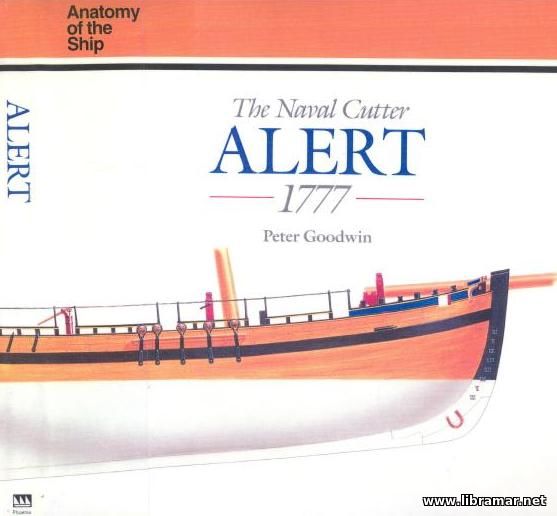 The ship addressed in this release, "Alert", was one of the huge number of armed cutters built with the ultimate intention to supplement the British Navy Fleet in the period 1763-1835. These ships were small-sized and swift and they were mostly deployed for the relatively minor roles like conveying dispatches, inshore patrolling and reconnaissance duties; in addition to the above, subject vessels were also providing assistance to the Revenue service.
The book prepared by Peter Goodwin features an excellent and detailed description of the ship including the origins, concept and other details, with the technical information being supplemented with more than a hundred of perspective and 3-view drawings. Peter Goodwin is also the author of two other publications which belong to the AOTS series and depicting the Blandford and Granado ships. Approximately one third of the book provides readers with the thorough but concise description of the hull and equipment, as well as the service.
The rest of the publication is models and drawings, labeled diagrams and plans of nearly every piece of equipment contained on board. This all makes this book a truly irreplaceable information source for ship model makers and other categories of marine enthusiasts.
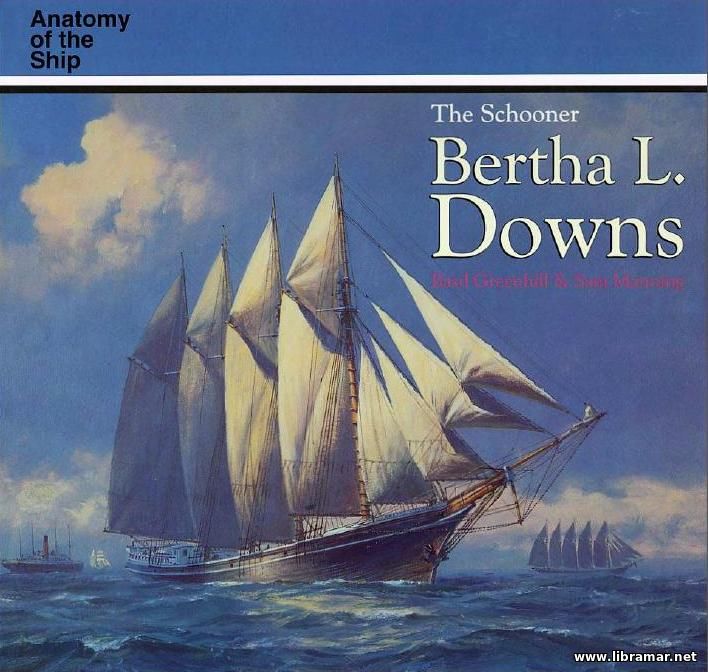 This work by Basil Greenwill is fully dedicated to the famous schooner and contains various plans, drawings and general technical/non-technical info on this ship. Bertha L. Dawns was one of those large schooners constructed in England at the end of XIX - beginning of XX century; almost all of such vessels were mostly employed in the coastal trade, mostly dealing with the coal transportation from Virginia to New England. The ship addressed in this publication, was launched in 1908 and was later sold to Danish owner - she was given a new name - "Atlas". Like all other vessels, her contemporaries, Bertha L. Dawns managed to make a very good profitable living through the early twentieth century before getting broken up in Germany after 42 successful working years under five flags.
The type to which this vessel used to belong, differs a lot from any other one. Those ships were able to operate quite economically, having a small steam engine on board, used to hoist the sails. This, in turn, required much smaller crew in comparison to the conventional steam ships. However, the speed of these vessels was relatively low, since they were fully dependent on the wind, so the cargoes they used to haul were mostly stone, coal and lumber...
 This publication by Al Ross belonging to the Anatomy of the Ship series from Conway Maritime Press is dedicated to the famous escort carrier Gambier Bay, which was a Casablanca class mid-was carrier serving within the United States Navy Fleet. The book addresses the remarkable service history of the carrier, machinery, hull structure and general arrangement, fire control equipment, radar, catapult, searchlights, armament, boats and camouflage, and, of course, aircraft.
The drawings provided in the publication depict general arrangement of the ship, machinery, construction details, lines, fittings, armament, rig, boats, camouflage, battle damage and flight deck arrangements. In general, the publication follows the usual established format, and consists of the historical and descriptive parts, followed by a group of images and many detailed drawings of the USS Gambier Bay.
For sure, all readers will gain a significant amount of understanding of the construction and specific features of this class of ships, and this fact makes us consider this book very useful for the naval enthusiasts, ship model makers and all other people willing to know a bit more about the naval ships and wars of the past.
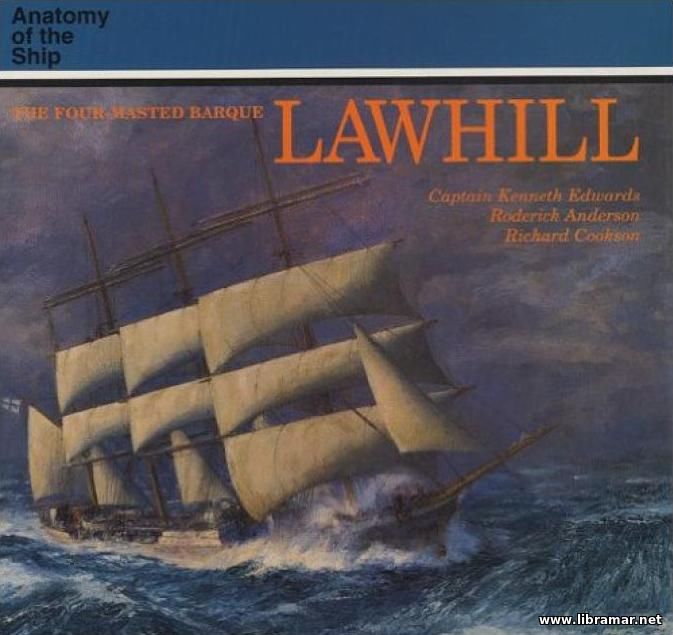 Another title of the Anatomy of the Series - this one is some sort of tribute to Lawhill, the last of those great barques that made a living in the last century. Though the ships in question have almost disappeared from the world's oceans, there are still some of them remaining - they are either moored as museum ships or converted to the sailing ships used for training the future seamen. This collection compiled by three authors - Kenneth Edwards, Roderick Anderson and Richard Cookson, contains so much of valuable contemporary material like records, drawings and images, making this volume a very useful reference book for any naval history enthusiast.
For most of the people interested in marine history, these barques are mostly associated with the famous grain races of the past. The four- and five-masted ships were the ultimate sailing vessels, and the one to which the present book is dedicated, Lawhill, was one of the largest barques. This is definitely the must-have book and one of the most important and informative ones for every naval enthusiast interested in the last days of the greatest sailing vessels. We do recommended it to everyone as we recommend any other Anatomy of the Ship publication.
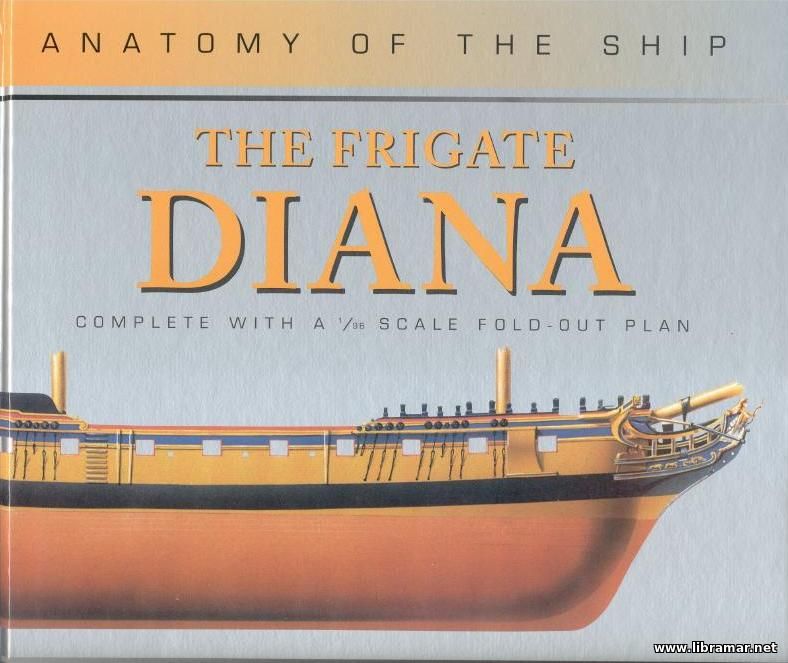 This thorough and very interesting study performed by David White has been based on the Admiralty Collection in the Draught Room of the National Maritime Museum. There are about eight thousand detailed draughts in this collection, of which roughly one-quarter relate to frigates. Thirty-eight of these ships belong to the Artois class and, according to the catalogue, ten of them represent Diana. But, we cannot say this is correct. Draught number 1883, the sheer draught, is the original Navy Board copy for building the class and has several projected modifications overdrawn on it-one of them for a thirty-six-gun version.
The inside and outside planking expansions, under the draughts reference numbers 1884 and 1884A, remain mysteries. They are dated 'Deptford Yard 14 May 08' and as far as can be ascertained no ship of the class was ever in the state depicted. Circumstantial evidence in other fields points to them being academic exercises only. Many other channels have been explored and re-explored in order to obtain accurate and authentic information to present it to the readers. Some of the major ones are listed at the end of the Introduction under the heading 'Sources'. To list them all would require a further volume.
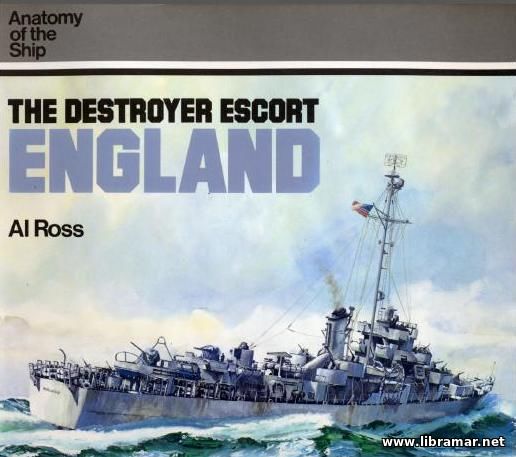 Designed with mass production in mind, the England was typical of the scores of long-hulled destroyer escorts built during the Second World War. Of all-welded construction, England's hull was a flush-deck design incorporating both longitudinal and transverse framing. Water-tight integrity was enhanced by 11 water-tight bulkheads, pierced by watertight hatches only on the first platform deck level.
Below the first platform deck, access to all water-tight compartments was limited to water-tight scuttles fitted to the decks above. Further protection was ensured by longitudinal bulkheads aft and forward of the engineering spaces - those spaces were extending from keel to main deck between frames 59 and 113. The engineering spaces were staggered to enhance powerplant survivability and were arranged: fire room (boiler room), engine room, fire room, engine room.
The forward pair normally serviced the starboard shaft; the after pair the port shaft. The engineering spaces could only be reached vertically from the main deck. Fuel oil was stored in compartments forward and aft of the engineering spaces below the 2nd platform deck and reserve feed water tanks were fitted outboard in both fire rooms...
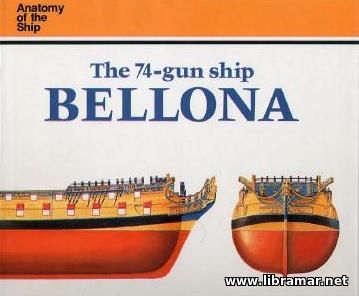 The ship to which the present release is dedicated, used to form the very backbone of the British battleships fleet. More than two hundred of them served with the Royal Navy, including those captured from other navies, and 74s took one of the leading parts in all the major naval battles in large numbers, and spent so many years in gruelling blockade service off such ports as Brest, Toulon, and Cadiz.
The HMS Bellona was one of the earliest of these vessels, and one which served as a model for many of the other vessels; we shall note that, in addition to what is stated above, she was also one of the longest lived, for she served from 1760, when the 74 was first being introduced to the British Navy, until 1814, when the technology which made them obsolete was already in existence.
Her service began brilliantly, when she was directly involved in defeating the French Courageux in a famous single-ship engagement. After that her service was a little bit disappointing, in that she missed two major actions, Copenhagen in 1801 and Strachan's action of 1805, through unfortunate circumstances. Nevertheless she saw much service during her fifty-four years, in the North Sea, Baltic, Atlantic and West Indies...
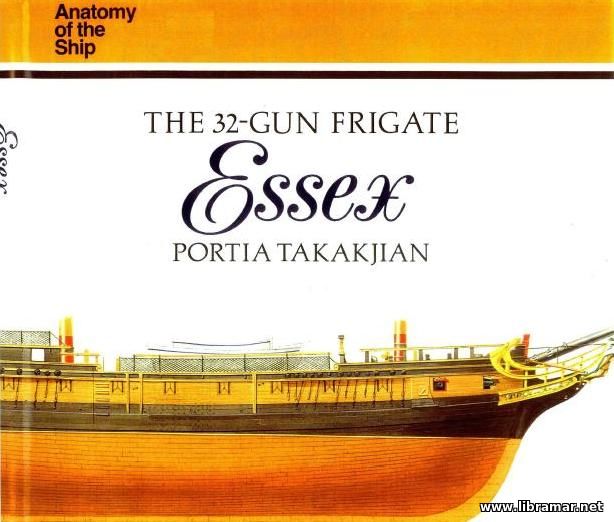 The aftermath of the Revolution was a time of great political and economic difficulty for the United States. The most serious threat to the new nation's trade came from an unexpected source: the pirate Barbary states of North Africa. Economic chaos dictated the sale of the remaining ships of the Continental Navy, while unprotected ships and seamen fell prey to the Dey of Algiers. Despite the raids by the Barbary pirates in 1785, Congress could not raise support for a permanent army or naval force.
As attacks on shipping escalated, suggestions were made to comply with the demands of the Dey for tribute or to subsidize a European power to protect American trade. Portugal's blockade of the Straits of Gibraltar had confined the Dey's activities to the Mediterranean until October 1793, when a twelve-month peace was established and Portugal lifted her blockade. Only then did Congress decide to protect American shipping by authorizing the construction of six frigates with a law passed on 27 March 1794. Depredations upon United States' shipping and merchant seamen were not the only spur to action by the Congress. Attempts at neutrality in conflicts between the Dutch, British and French had proven futile.
Without a navy to protect their interests, merchants in the United States were subject to soaring insurance costs, while at the same time losing ships and their cargoes; these merchants applied considerable pressure upon Congress for relief. Despite the peace treaty signed with Algiers in September 1795, Congress authorized the construction of three of the original six frigates, the United States, the Constitution and the Constellation. In November of the following year Congress suspended construction after an unsatisfactory peace was signed with the Pasha of Tripoli...
|







